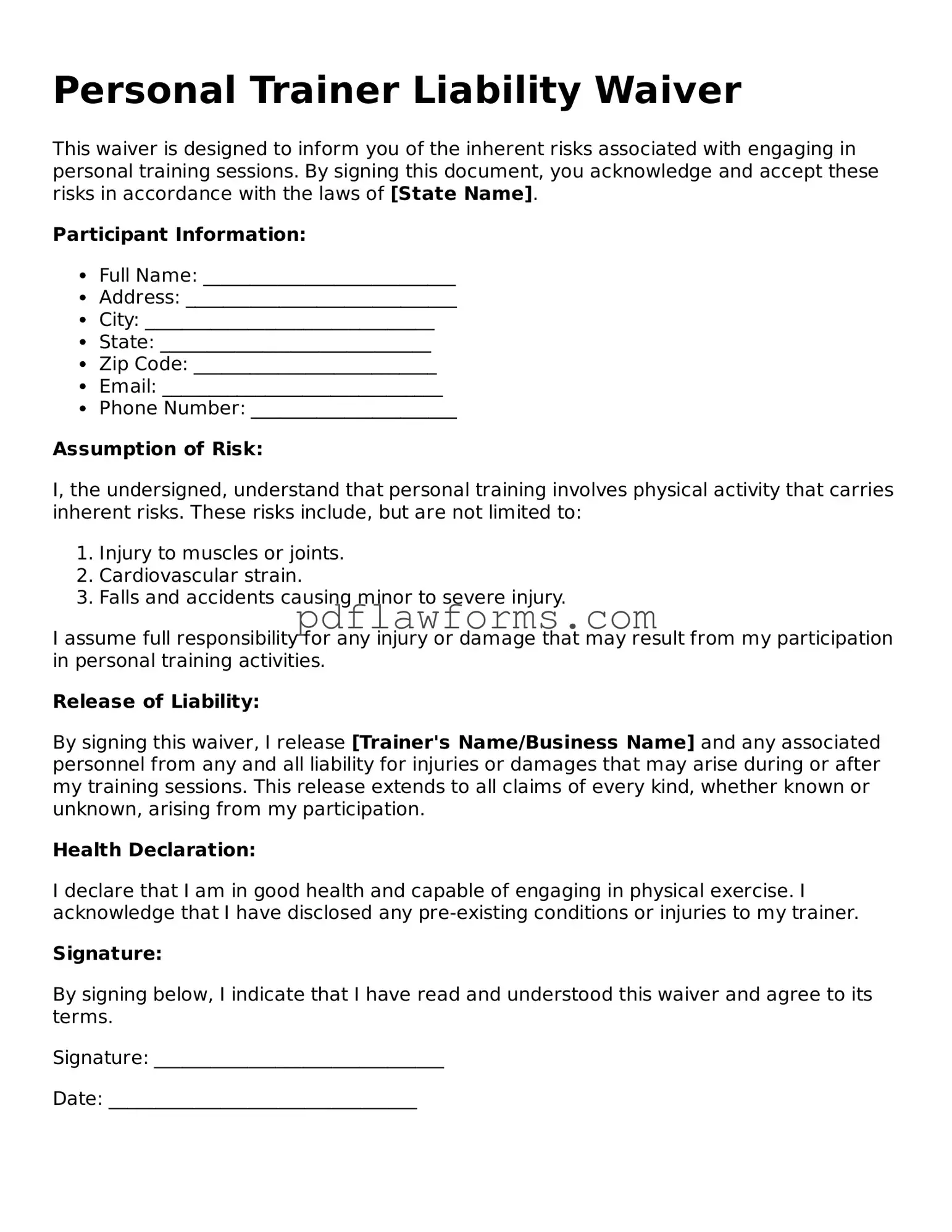Official Personal Trainer Liability Waiver Form
A Personal Trainer Liability Waiver form is a document that protects personal trainers from legal claims resulting from injuries or accidents that may occur during training sessions. By signing this form, clients acknowledge the risks involved in physical activities and agree not to hold the trainer responsible. It is essential for both trainers and clients to understand the importance of this waiver in ensuring a safe training environment.
To get started, please fill out the form by clicking the button below.
Make My Document Online
